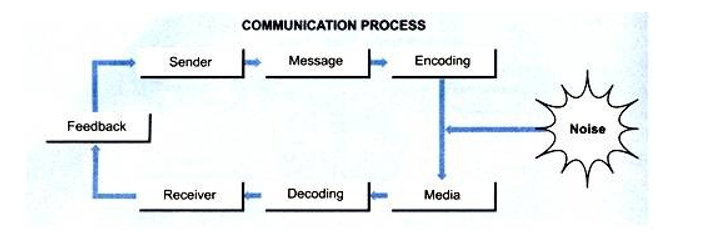Topic One: Introduction to Business Communication
Defining Communication
- Communication is the art and process of creating and sharing ideas. Effective communication depends on the richness of those ideas.
- The word communication is derived from the Greek word ‘comunicare’ that is literally translated as ‘to make common’ or ‘to share’. This means that communication is essentially a form of interaction. Communication can therefore, be termed as the process of transmitting information in form of data, messages and instructions from one source to another.
Overall Purpose of Communication
- To Inform– e.g. through latest information such as news, papers and speeches.
- To educate– Passage of knowledge from the sender to the receiver.
- To persuade– convince/influence-so as to change the attitude of the receiver e.g preachers and politicians.
- To entertain-engage attention of audience
Purpose of Effective Communication in an Organization
- Enhancing decision making and problem solving.
- It brings about increased productivity.
- Clear and more streamlined work flow.
- Enhances professional image of the company.
- Ensures sound business relationships (company and customers).
- Successful response/feedback is ensured through effective communication.
Topic Two: Communication Process
Elements of Communication
- Sender- Also known as the source/transmitter. This is anyone who wishes to convey an idea or concept to others, seek information, or express a thought or emotion.
- Message- information being forwarded or being sent
- Encoding- Process through which the sender puts the information being sent in an appropriate form such as text, pictures or symbols suitable to the receiver
- Channel/Medium- method used to deliver a message
- Receiver/Recipient- one who receives the message & attaches meaning to it.
- Decoding –converting encoded message into language and understanding it
- Feedback- is the desirable response of a receiver to a sender’s message
- Noise- Factors that interfere with the exchange of message
Roles of Sender in Communication Process
- Conceives message
- Encodes message
- Selects appropriate channel of communication
Roles of Receiver in Communication Process
- Decodes message
- Interprets message
- Sends back appropriate feedback
Communication Process Illustrated;

Choosing the means of Communication
The medium/channel chosen for communicating any message will depend on factors such as:
- Cost: consider how much the communication will cost
- Confidentiality: consider privacy e.g. a telephone call could be overheard
- Safety and security: should a special means of message delivery be considered?
- Urgency: choose the method that will produce the desired results in time
- Distance: is communication within the building, same town or outside the world?
- Written record: is there need for proof? E.g. confirmation of transactions, legal documents etc
- Resources: consider equipment and staff available
- Time of day: particularly important when communicating with overseas countries
- Recipient: consider who is receiving the message. Consider also the relationship between sender/receiver
- Influence: do you want to convey a certain impression?
Summary of Channel Communication Choices
Use Oral Channels when:
- Your message is fairly simple
- You need an immediate response
- You don’t need a permanent record
- You want to encourage interaction in problem solving or decision making
- You need to read the recipients body language
- You need to hear the tone of your recipient’s response
- Your message has an emotional factor
Use written channels when:
- Your message is fairly detailed or requires careful planning
- You don’t need an immediate response
- You need a permanent, written record
- You have a big, widespread audience
- You want to minimize the distortion that normally occurs when messages are passed orally from person to person
- You don’t need immediate interaction with your audience
- Your message has no emotional factor
Use electronic channels when:
- Speed is important
- Time zones differ
- You are physically separated from your audience
(Visited 138 times, 1 visits today)
Share this:
